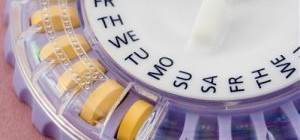 For an autistic child, a hospital visit can be quite a strenuous event. The loud noises of overcrowded waiting rooms, the bright lights, and an environment where everyone is in a hurry can trigger over-stimulation in children with autism. Moreover, the unfamiliar ambiance of the pediatrician’s clinic, the long wait times, and change in regular routine can act as potential stress triggers for the autistic child.
For an autistic child, a hospital visit can be quite a strenuous event. The loud noises of overcrowded waiting rooms, the bright lights, and an environment where everyone is in a hurry can trigger over-stimulation in children with autism. Moreover, the unfamiliar ambiance of the pediatrician’s clinic, the long wait times, and change in regular routine can act as potential stress triggers for the autistic child.
However, there are several ways in which these regular medical visits can be improved, helping children with autism feel less stressed before and during the appointment.
How to Prepare Children with Autism before a Pediatrician Visit?
The techniques used to prepare an autistic child for a new experience or place are called preventive or antecedent strategies. Basically, these strategies are applied before the problem takes place, effectively preventing the issue before it arises. Therefore, parents and caregivers of children with autism must focus on these strategies as prevention has been recognized as the most effective behavior management strategy by psychologists.
For Non-Verbal Autistic Children:
MAPS pediatricians claim that role-playing has a positive effect on autistic children with limited or no communication skills. Parents and caregivers can teach them about the clinic and the doctor by dressing up as one and using model actions to imitate the real procedure in advance. This is a creative and effective way to help the autistic child understand what the pediatric visit will be like beforehand, without it being a nasty surprise.
For Autistic Children with More Communicative Skills:
If the child has comparatively higher communication skills and cognitive ability, it is best to discuss the pending visit to the pediatrician in detail with them. Allow your child to ask questions about their fears and always remember to focus on the positive outcomes of the visit. For instance, tell them that a doctor is a good person who will care for them or that the doctor will help him/her grow up big and strong. These positive messages will help the child trust the doctor, making him/her more comfortable.
Things to Do before Going for the Appointment:
Allow your child to take his/her favorite belonging to the clinic and keep it with them throughout the appointment. This comfort object could be anything, a stuffed animal, toy, or a blanket.
Prepare a special bag for your child containing sensory items and activities which will keep him/her busy during the wait-time while visiting the MAPS pediatrician.
Don’t hesitate to approach the clinic’s staff if you need something to make your child less anxious and comfortable. They are there to help you make the appointment a successful one.
It is advisable to prepare a list of your child’s sensitivities and triggers which can be handed to the clinic’s staff and the doctor. This will inform them of what to do and what not to do during the visit, ensuring maximum comfort for your child.
How to Keep Your Child Calm during an Appointment with the Pediatrician?
In most cases of autistic children, it has been observed that the communication skills are quite delayed especially during the early developmental stages, i.e., 0-5 years. Under stressful conditions, the ability of these children to understand spoken communication gets even more limited. At times such as these, visual support has been proven to be an effective comfort strategy for children with autism. Visual support strategies include pictures, first-then boards, and social stories. You can either carry these items with you or can ask the clinic’s staff beforehand if they have these items at their disposal, for use.
Familiarity is the most comforting thing for ASD affected children. So, engage your child in a familiar routine if he/she gets very anxious. This might include counting, involving the child in a familiar routine, or taking deep breaths.
No matter how much your child is agitated, as a parent or a caregiver, you must always stay calm and take control of the situation. Use a soft and calm voice to soothe your child and adopt a behavior which you would like your child to imitate.
If your child is not comfortable with a certain medical procedure, which does not require their attention, try to distract him/her so that it can be carried out successfully.
In Conclusion:
As parents and caregivers, you know your child the best. Therefore it depends on you to communicate with the MAPS pediatrician and his/her medical team about your child’s needs and potential triggers. It won’t be a smooth ride for the first time. But eventually, these strategies will help children with autism accept the clinic’s environment and the visits.
Contributed byhttps://www.medmaps.org







